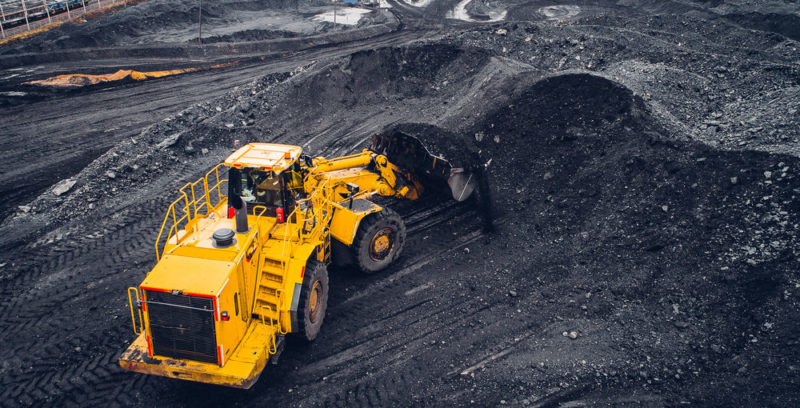We explain what carbon is and what its main characteristics are. Also, its applications and what is the carbon cycle.
What is carbon?
Carbon is one of the most important elements on the periodic table , at least in terms of its abundance and its need for organic life . More than 16 million substances are known to contain carbon, including many essential compounds for living things . This element makes up 0.2% of the earth's crust.
Carbon exists in numerous forms , depending on the environmental conditions in which it is found, and constitutes one of the elements with the most human uses and the greatest presence in society . In fact, our body exhales carbon dioxide (CO 2 ) as a product of respiration , and it is found as carbon monoxide (CO) in the gases released by the exhaust of combustion engines.
Carbon characteristics
- Carbon in the periodic table is found between the carbonids, with atomic number 6, atomic mass 12.01 and is represented by the symbol C.
- It is a non-metallic element and is a good conductor of electricity when in the form of graphite.
- Generally speaking, carbon is not a highly toxic substance. In most of its physical forms it is safe for human handling. However, many of the organic and inorganic carbon-based compounds can be toxic and even lethal to humans . Hydrocarbons, for example, can have a devastating effect on the respiratory system , as well as coal (there are numerous cases of poor health in coal mine workers and workers in hydrocarbon exploitation stations ).
- Carbon dioxide and monoxide (CO 2 and CO) are lethal substances if inhaled in large doses, as they prevent proper oxygenation of the body. The carbon-14 isotope, being radioactive, represents a risk of contamination to some extent. Cyanide (CN - ), one of the most deadly and popular poisons, is made from carbon and nitrogen atoms .
- Traces of carbon and hydrocarbons can be found on distant planets, such as the gas giants of the Solar System , without pointing to any organic life constitution that we know of.
Forms of Carbon (Halotropes)
 Although carbon is solid at room temperature , when it forms graphite it can sublimate when the temperature passes 3600 ° C and become a gaseous state . In nature, however, it occurs in six different forms or allotropes (property of presenting different molecular or atomic structures):
Although carbon is solid at room temperature , when it forms graphite it can sublimate when the temperature passes 3600 ° C and become a gaseous state . In nature, however, it occurs in six different forms or allotropes (property of presenting different molecular or atomic structures):
- Amorphous carbon . Like soot or most coals, the pure element appears without a certain structure.
- Graphite . Black, opaque and soft, graphite has the property of staining, which is why it is used as a filler for wooden pencils .
- Diamond . Diamond and graphite contain the same carbon atoms but in a different structure, so they have different properties as well. Diamond is a tremendously hard, transparent gemstone.
- Fullerenes . Discovered in the mid-1980s, it is about 60 carbon atoms structured no longer hexagonally, as usual, but heptagonal or pentagonally. This gives it a spherical appearance, like a soccer ball.
- Nanotubes . One of the first products of the nanotechnology industry, it is nothing more than cylindrically rolled graphite sheets and finished off at their ends by carbon hemispheres.
- Carbinos . One of the most powerful industrial products of the last decades, it consists of a carbon atom made univalent and electrically neutral, which is the most resistant substance ever known.
Chemical compounds with carbon
 Carbon-based organic compounds
Carbon-based organic compoundsMany substances essential for life are based on carbon. Fatty acids (made from combinatorial carbon, oxygen and hydrogen ), esters present in fruits, most amino acids, enzymes and proteins that support life , benzene, carbohydrates that give us energy, all from of carbon combinations.
The chemistry of carbon is known as the chemistry of life , since living beings known to date are based on molecular structures based on carbon. CO 2 is essential for photosynthesis, for example.
Carbon-based inorganic compounds
In its extremely high capacity for combination, carbon is also found in many inorganic substances. Carbonates (calcites (CaCO 3 )), numerous salts and acids (carbonic acid (H 2 CO 3 )) , or metallic forms such as carbides and acetylides (calcium carbide (CaC 2 )), both with excess acidity, are forms of inorganic compound from carbon.
Hydrocarbons
 Hydrocarbons are substances made up of hydrogen and carbon atoms . These substances are linked to life (especially as fossil fuels), although they can exist on planets that have never hosted it. The oil and its derivatives, natural gas, methane, hydrocarbons are very high industrial performance because its flammability.
Hydrocarbons are substances made up of hydrogen and carbon atoms . These substances are linked to life (especially as fossil fuels), although they can exist on planets that have never hosted it. The oil and its derivatives, natural gas, methane, hydrocarbons are very high industrial performance because its flammability.
Carbon extraction
 Since carbon is so numerous on our planet , it tends to abound in subterranean regions where pressure and temperature allow it to rearrange itself in various structures. Thus, there are coal mines, but also graphite and diamond mines.
Since carbon is so numerous on our planet , it tends to abound in subterranean regions where pressure and temperature allow it to rearrange itself in various structures. Thus, there are coal mines, but also graphite and diamond mines.China , the United States and the European Union are the three largest coal exploiters on the planet, although it is abundantly distributed throughout the 100 countries that extract it . In contrast, the much more coveted fossil hydrocarbons are found in large deposits in the Middle East , Russia, Alaska, Mexico and Venezuela , mainly.
The exploitation of diamonds is mainly concentrated in South Africa and South America , although there are other smaller-scale mines in North America and South Asia. African exploitation has been highly controversial , due to its human and political costs on the local population .
Industrial applications of carbon
 The extraction of carbon in its various forms is a common activity in the human economy , which mobilizes real masses around its extraction from the subsoil (coal, graphite and hydrocarbons) and its subsequent refining and exploitation.
The extraction of carbon in its various forms is a common activity in the human economy , which mobilizes real masses around its extraction from the subsoil (coal, graphite and hydrocarbons) and its subsequent refining and exploitation.Hydrocarbons, above all, are an indispensable part of modern industrial gear as they are high-performance fuels for all types of transport thanks to the fact that oil allows a wide range of usable derivatives such as plastic or nylon. The same is true of the automotive lubricant industry.
Coal, on the other hand, is used mostly as fuel to generate electricity, although its polluting effects are feared and proven. It is also used as a combustible material for domestic use.
Graphite is essential for the pencil industry and the protection rods of atomic reactors. Diamonds, paradoxically, are traded as decorative objects or in the manufacture of scalpels and tools that take advantage of their hardness.
Finally, the radioactive isotope Carbon-14 is used in numerous scientific and archaeological investigations as a marker of the age of organic remains.
Carbon cycle
 The feedback between plant and animal organisms and decomposers is known as the carbon cycle . Animal respiration and the decomposition of certain fungi release amounts of CO 2 into the atmosphere .
The feedback between plant and animal organisms and decomposers is known as the carbon cycle . Animal respiration and the decomposition of certain fungi release amounts of CO 2 into the atmosphere .This CO 2 is utilized, with water and light sun , by the photosynthesis of plants , the immediate product is oxygen and new organic matter (fruit, leaves, bark, dead animals) then decomposes. And the cycle begins again, sustaining life in its turn.
The above content published at Collaborative Research Group is for informational and educational purposes only and has been developed by referring reliable sources and recommendations from experts. We do not have any contact with official entities nor do we intend to replace the information that they emit.
Luke is passionate about fostering student involvement and connection. He studied psychology for his major and likes learning about the past. Luke aims to specialize in artificial intelligence and cybersecurity. .
Leave a reply
Your email address will not be published. Required fields are marked *Recent post

Sport: What Is It, Types, Risks, Features, Characteristics and Examples

Dogs: Emergence, Features, Characteristics, Feeding and Breeds

Story: Definition, Elements, Structure, Features and Characteristics

